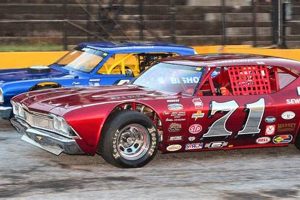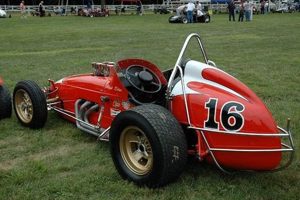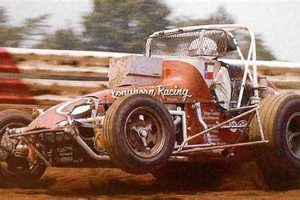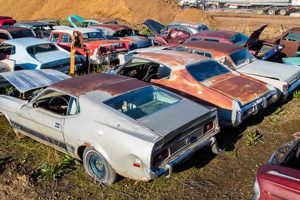The restoration and maintenance of older automotive sound systems, typically those predating the 1990s, involves a specialized skill set due to the technology and components used. For example, a 1960s-era radio might require vacuum tube replacement or meticulous cleaning of potentiometers to restore functionality.
The preservation of these systems maintains vehicle authenticity and enhances the value of classic automobiles. Functional original audio equipment contributes to the overall ownership experience, providing a tangible connection to the past. Moreover, retaining original equipment averts potential damage caused by modifying the vehicle’s electrical system to accommodate modern head units.
The following sections will delve into specific aspects of this discipline, including component identification, common failure points, diagnostic techniques, and best practices for ensuring longevity. These topics will offer a deeper understanding of the challenges and rewards associated with working on these systems.
Essential Guidelines for Legacy Automotive Audio System Restoration
The successful restoration of older car audio units necessitates careful attention to detail and a methodical approach. The following guidance is intended to assist technicians in this endeavor.
Tip 1: Prioritize Safety: Disconnect the vehicle’s battery before commencing any work. Capacitors within the unit can retain a charge, posing a shock hazard. Discharge capacitors using appropriate methods.
Tip 2: Document Original Wiring: Before disconnecting any wires, create a detailed diagram or take photographs of the existing connections. This step is crucial for reassembly and troubleshooting.
Tip 3: Clean Components Carefully: Use appropriate cleaning agents specifically designed for electronics. Avoid harsh chemicals that can damage delicate components. Employ soft brushes and compressed air to remove dust and debris.
Tip 4: Inspect Capacitors Thoroughly: Capacitors, especially electrolytic types, are prone to failure. Examine for signs of bulging, leakage, or corrosion. Replace any suspect capacitors with components of equivalent or higher voltage ratings.
Tip 5: Lubricate Mechanical Parts: Moving parts such as tuner dials and potentiometers may require lubrication. Use specialized lubricants designed for electronic equipment to ensure smooth operation and prevent corrosion.
Tip 6: Test Components Individually: Employ a multimeter and component tester to verify the functionality of resistors, transistors, and diodes. Replace any components that fall outside their specified tolerances.
Tip 7: Seek Professional Assistance: If the unit contains complex circuitry or requires specialized knowledge, consider consulting a qualified technician experienced in vintage electronics repair.
Adhering to these guidelines will increase the likelihood of a successful restoration, preserving the functionality and value of these systems.
The subsequent sections will explore advanced diagnostic techniques and strategies for sourcing replacement parts.
1. Component Identification
In the sphere of older automotive sound system maintenance, accurate component identification is fundamental for effective diagnostics and repair. The ability to discern the function and specifications of individual components is crucial for restoring functionality and preserving system integrity.
- Transistors and Integrated Circuits
Older systems employed discrete transistors and early integrated circuits (ICs). Identifying these components by their markings, which can be faded or obscured, is essential. A misidentified transistor can lead to improper circuit operation or damage. For example, substituting an NPN transistor for a PNP type will likely result in circuit failure.
- Capacitors
Capacitors are critical for filtering and signal coupling. Electrolytic capacitors, prevalent in vintage equipment, are prone to drying out and failing. Identifying the capacitance and voltage rating of these components is vital for selecting appropriate replacements. An incorrectly rated capacitor can result in circuit instability or component rupture.
- Resistors
Resistors control current flow and voltage division within the circuit. Identifying their resistance value and tolerance is crucial. Resistors can drift in value over time due to heat and aging. An inaccurate resistance value can alter circuit behavior, leading to distortion or malfunction.
- Vacuum Tubes (in some systems)
Some early car radios utilized vacuum tubes for amplification. Identifying the tube type and its pinout configuration is necessary for proper operation. Incorrect tube insertion or substitution can damage the tube and the surrounding circuitry.
Mastery of component identification provides the groundwork for successful older automotive sound system maintenance. The ability to accurately identify, test, and replace components ensures that the system operates within its intended parameters, maintaining both functionality and value. This skillset is invaluable when dealing with systems where documentation may be scarce or nonexistent.
2. Schematic Interpretation
Accurate schematic interpretation forms a cornerstone of successful older automotive sound system maintenance. These schematics serve as roadmaps of the system’s electronic architecture, delineating the interconnection of components and their respective functionalities. The absence of accurate interpretation inhibits effective fault diagnosis and component-level repair, often resulting in prolonged troubleshooting or system incapacitation. For example, tracing a signal path through a complex amplifier circuit necessitates understanding the schematic’s representation of transistors, capacitors, and resistors to identify potential signal bottlenecks or component failures. Neglecting the schematic and attempting repairs based solely on visual inspection can lead to misdiagnosis and further damage to the equipment.
Consider the case of a malfunctioning FM tuner in a 1970s-era receiver. A schematic reveals the intricate interplay between the local oscillator, mixer, and intermediate frequency (IF) amplifier stages. By analyzing voltage measurements at specific test points indicated on the schematic, a technician can isolate the faulty stage, whether it be a defective transistor in the IF amplifier or a misaligned tuning capacitor. Without the schematic, the troubleshooting process becomes significantly more challenging, relying on guesswork and increasing the risk of damaging otherwise functional components. Moreover, the schematic provides essential information for setting bias currents and adjusting alignment procedures, ensuring optimal performance after component replacement.
In conclusion, schematic interpretation provides the framework for diagnosing and repairing electronic circuits. Its role is indispensable to older automotive sound system maintenance by furnishing the technician with a comprehensive understanding of circuit operation, enabling precise fault isolation and effective repair strategies. Overlooking this essential skill leads to inefficient troubleshooting, potential damage to components, and diminished success in restoring functionality. Proficiency in schematic interpretation is an integral aspect of preserving the value and functionality of classic automotive audio equipment.
3. Diagnostic Procedures
Effective diagnostic methodologies are paramount in addressing malfunctions within legacy automotive audio systems. Systematically isolating the source of the problem mitigates the risk of component damage and guides the repair process.
- Signal Tracing
Signal tracing involves systematically following the audio signal path through the system, from input to output. An oscilloscope or audio probe identifies points where the signal is absent or distorted, indicating the location of the fault. For example, a weak or absent signal at the output of the preamplifier stage suggests a problem within that section, such as a faulty transistor or capacitor.
- Voltage Measurements
Voltage measurements at key test points within the circuit provide valuable information about component functionality. Deviations from expected voltage levels can indicate a faulty transistor, resistor, or capacitor. Comparing measured voltages to those indicated on a schematic diagram assists in pinpointing the source of the issue. A significantly low voltage at the collector of a transistor, for instance, might suggest a shorted component or a problem with the bias network.
- Component Testing
Individual component testing using a multimeter or component tester verifies the functionality of discrete components. This includes checking resistors for proper resistance, capacitors for capacitance and leakage, and transistors for gain and leakage. This method isolates faulty components contributing to the system’s malfunction, such as a capacitor with excessive leakage impacting the audio signal.
- Visual Inspection
A thorough visual inspection can reveal obvious signs of damage, such as burnt resistors, bulging capacitors, or broken solder joints. Visual cues often point to the area of the circuit requiring further investigation. Discoloration on a resistor, for example, suggests overheating and potential failure.
The application of these diagnostic procedures ensures a methodical and effective approach to legacy automotive audio system maintenance. By systematically isolating the source of the malfunction, technicians mitigate the risk of further damage and streamline the repair process, enhancing the longevity and functionality of the system.
4. Sourcing Replacements
The acquisition of suitable replacement components is a critical aspect of successfully maintaining older automotive sound systems. The availability of original parts diminishes with time, necessitating alternative strategies for securing functional equivalents.
- Salvage Operations and Donor Units
Obtaining components from salvaged units or donor radios represents a valuable source for original parts. Scouring junkyards or connecting with vintage electronics enthusiasts can yield units with intact components. For instance, a non-functional radio of the same model might contain a working potentiometer or transformer needed for a repair. This approach maintains originality but depends on the availability of suitable donor units.
- New Old Stock (NOS) Components
New Old Stock (NOS) refers to components manufactured decades ago but never used. These components are often available through specialized electronics suppliers or online marketplaces. NOS parts provide a direct replacement option, preserving the system’s original performance characteristics. However, NOS components can be expensive and may have degraded due to age, requiring careful inspection before installation.
- Modern Equivalents and Substitutions
When original components are unobtainable, modern equivalents can be used as substitutes. Identifying suitable replacements requires cross-referencing datasheets and understanding the original component’s specifications. For example, a modern transistor with similar gain, voltage, and current ratings might replace an obsolete transistor. This approach necessitates careful consideration of circuit compatibility and may require minor circuit modifications to ensure proper operation. Potential alteration impact is a key factor.
- Custom Fabrication and 3D Printing
In cases where specific mechanical parts or housings are unavailable, custom fabrication or 3D printing offers a viable solution. Reproduction knobs, buttons, or mounting brackets can be created to match the original specifications. This approach is particularly useful for restoring the cosmetic appearance of the system. It is important that the materials used be durable and resistant to degradation.
The sourcing of replacement components is therefore a multifaceted process, requiring resourcefulness, technical knowledge, and a commitment to preserving the authenticity and functionality of the repaired systems. The appropriate strategy is often dictated by the component’s criticality, availability, and the desired level of originality. This meticulous attention contributes directly to restoring the audio systems to their optimal operational states.
5. Preservation Techniques
The long-term viability of older automotive sound systems hinges on the application of appropriate preservation techniques. These techniques mitigate the effects of environmental degradation, component aging, and improper storage, all of which contribute to functional decline. The effectiveness of any audio restoration hinges not only on repairing existing faults but also on implementing measures to prevent future deterioration. Without proactive preservation, even meticulously restored systems are susceptible to premature failure, rendering the repair effort unsustainable.
Consider the effects of humidity and temperature fluctuations. These environmental factors accelerate the corrosion of electrical contacts and the degradation of capacitors. Storing a vintage radio in a damp environment can lead to the formation of rust on metal components and the breakdown of insulation, resulting in short circuits and signal loss. Therefore, proper storage practices, such as maintaining stable temperature and humidity levels, are crucial for extending the lifespan of these systems. Similarly, the accumulation of dust and debris within the radio chassis can impede airflow and contribute to overheating, accelerating component aging. Regular cleaning using appropriate methods prevents this build-up, maintaining optimal operating temperatures.
Ultimately, preservation techniques are an inseparable part of the broader process. They represent a proactive investment in the longevity and performance of these devices. Implementing these techniques contributes to the long-term functionality of these radios, contributing to the preservation of automotive history.
Frequently Asked Questions
The following addresses prevalent inquiries regarding the maintenance and restoration of vintage car audio systems. The responses provide informative guidance based on established practices and technical expertise.
Question 1: What constitutes a “vintage” car stereo system, necessitating specialized repair?
Generally, systems predating the 1990s, often characterized by analog circuitry, electromechanical components, and distinct design aesthetics, require specialized restoration techniques.
Question 2: What are the most common failure points in older car radios and tape players?
Electrolytic capacitors, vacuum tubes (in early models), potentiometers, and mechanical tape transport mechanisms are frequently prone to degradation and malfunction due to age and use.
Question 3: Is it advisable to replace an older system with a modern head unit?
While modern units offer advanced features, replacing an original system can diminish a vehicle’s historical value and authenticity. Restoration is often preferred for preservation purposes.
Question 4: What tools are essential for older automotive audio system maintenance?
A multimeter, oscilloscope, soldering iron, component tester, desoldering equipment, and a comprehensive set of hand tools are generally required for effective diagnosis and repair.
Question 5: How can one prevent further deterioration of a restored system?
Proper storage in a controlled environment, regular cleaning, and periodic inspection can mitigate the effects of environmental factors and component aging.
Question 6: Are schematic diagrams readily available for most older car radios?
Schematics can often be found through online resources, manufacturer archives, or specialized repair manuals. Availability varies depending on the make and model of the system.
These answers address fundamental considerations relevant to the maintenance and restoration of older car audio systems. Consulting with experienced technicians is advisable for complex repairs.
The subsequent section will delve into the economic considerations associated with this specialized field.
Conclusion
This exploration of older car audio system maintenance has illuminated core facets of this specialized field. From component identification and schematic interpretation to diagnostic procedures and replacement part acquisition, the discussed areas represent a comprehensive overview of the skills and knowledge required for effective repair. The integration of preservation techniques further ensures the long-term viability of restored systems, mitigating the effects of environmental degradation and component aging.
The ability to maintain these systems preserves automotive history and maintains the value of classic vehicles. Continued advancement in diagnostic technologies and the resourceful sourcing of replacement parts will be crucial for sustaining this pursuit. Skilled practitioners dedicated to these methods are essential to guarantee the longevity and functionality of these systems.







